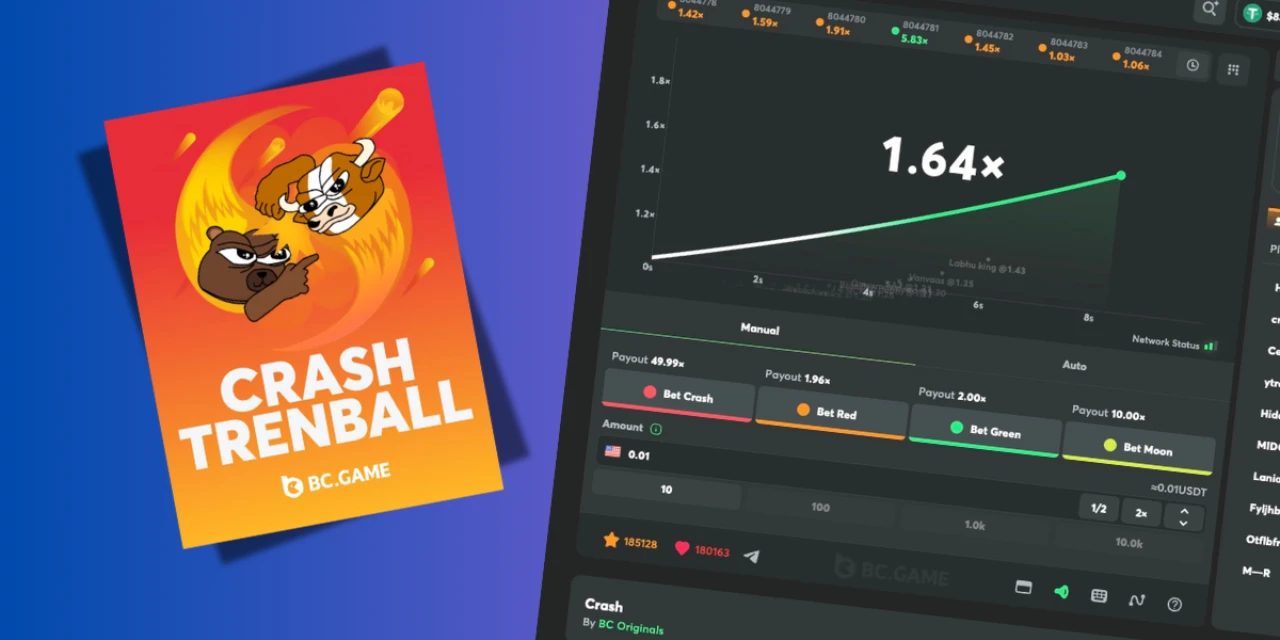
Bitcoin Gambling Strategies: Do They Really Work?
Ever heard of the foolproof way to beat a Bitcoin casino? Yeah, me too, and it’s usually about someone selling a system that’s about as reliable as a chocolate teapot.
The internet is full of so-called winning strategies, promising you’ll walk away with a fortune if you just follow the right pattern, formula, or bet progression.
Let’s be real – if guaranteed wins existed, casinos wouldn’t.
But not all strategies are nonsense. Some have a solid mathematical base, while others are just wishful thinking. My team and I tested the most popular ones to find out which was which.
In this article, I’ll cut through the hype to break down what works, what doesn’t, and why no strategy outplays the house forever.
Kelly Criterion: Playing It Safe
Bankroll management is key to lasting longer at the tables, and the Kelly Criterion is probably the most bankroll-friendly strategy I know.
It takes a smart approach to bet sizing, allocating just the right percentage of your bankroll based on risk and potential reward.
I tested it on BC.Game’s CoinFlip, and while I didn’t walk away rich, I ended with a profit and a bankroll still intact.
The system forces discipline, prevents reckless losses, and keeps you in the game longer. But it’s slow.
There’s no doubling up for a quick win here. In the end, Kelly is a smart bet, but you’ll find it tiresome if you’re a thrill seeker.
All-In Strategy (A.K.A: Your One Way Ticket to Bust)
The All-In strategy is exactly what it sounds like – bet everything on a single wager. Win, and you’re rich. Lose, and you’re out. Simple? Yes. Smart? Not so much.
This strategy is pure luck with no safety net.
Even with great odds, randomness is brutal, and one unlucky spin wipes you out. While it might make sense with bonus funds or a tiny bankroll, for real strategy? Not advisable.
Martingale: A Risky Balancing Act
I put the Martingale strategy to the test on Stake’s Dice, doubling my bet after each loss to see if I could claw my way back to profit.
At first, it worked; I recovered losses and even came out ahead. But then came the inevitable losing streak, and suddenly, my bets were getting out of control.
Martingale can be effective in the short term, especially with a solid bankroll and low-stakes bets.
But the risk is real: hitting a long streak of losses can wipe you out before you get the chance to recover. It’s a fun system to experiment with, but without strict limits, it’s easy to end up deeper than you planned.
Anti-Martingale: Riding the Hot Streaks (With Caution)
Unlike its more reckless counterpart, the Anti-Martingale strategy only increases bets after wins, keeping losses small and riding the momentum of a winning streak.
I tested it across different games, and while the approach felt more controlled, it’s not without its downsides.
On a good run, it’s a great way to maximize profit without burning through your bankroll.
But hot streaks don’t last forever, and resetting after every loss can mean missing out on bigger wins.
It’s a solid system if you play with discipline, but like most strategies, it won’t beat the house in the long run.
Paroli System: Built-In Safety Net
Unlike Martingale’s desperate chase, Paroli flips the script.
It doubles bets after wins instead of losses, similar to Anti-Martingale. But here’s the key difference from Anti-Martingale: Paroli has a built-in safety brake.
Instead of riding a winning streak indefinitely, you stop after three wins and reset to your base bet.
I tested it, and it felt structured. Losses stayed small, and wins stacked up nicely in short bursts.
The catch? Winning three times in a row isn’t as common as you’d hope, and capping streaks means missing out on bigger runs. Still, if you want a progression strategy with guardrails, Paroli is a solid pick.
Oscar’s Grind: The Slow and Steady Approach
If Martingale is all-in chaos, Oscar’s Grind is its calm, methodical cousin.
Instead of doubling after losses or wins, you increase bets by just one unit after a win and hold steady after a loss, grinding out small, consistent profits over time.
I’ve given Oscar’s Grind a run for its money, and while it didn’t deliver huge wins, it kept losses in check and gave me a fighting chance even during cold streaks.
It’s a patience game, though, profits are slow, and long losing streaks can stall progress.
If you prefer controlled betting over high-risk swings, this strategy is worth a shot.
Labouchere: Structured, but Still Risky
Labouchere takes a more calculated approach than Martingale, using a number sequence to determine bets instead of mindless doubling.
I tested it in roulette, and while I liked the sense of control (crossing off numbers felt oddly satisfying), a losing streak can stretch your sequence (and bets) longer than you’d like.
The good news?
It’s flexible, lets you set your own risk level, and doesn’t demand massive jumps in bet sizes.
The bad news? It still hinges on recovering losses, and a bad run can turn your betting list into a never-ending to-do list. If you’ve got patience and discipline, it may be worth trying – but just know when to cut your losses.
1-3-2-6: Smart System or Just Wishful Thinking?
The 1-3-2-6 strategy walks a fine line between controlled risk and the excitement of bigger wins.
You follow a four-step progression – betting 1, then 3, then 2, then 6 units – only advancing when you win and resetting after a loss.
It’s less punishing than Martingale and more structured than Paroli, making it feel like a solid middle ground.
When I tested it, it worked sometimes. Wins stacked up nicely for me during good streaks, but when losses hit, I found myself resetting before reaching the final step.
Overall, it’s a bankroll-friendly system that keeps things interesting, but like any betting strategy, it all comes down to luck. Fun to try, but again, no magic bullet.
Fibonacci: Slow Burn Sequence
The last Bitcoin gambling strategy on this list, the Fibonacci sequence, takes a more measured approach to betting. The strategy involves increasing stakes gradually after losses and stepping back after wins.
I tested it in roulette, and I appreciated the slower escalation compared to other systems, but long losing streaks still pushed bets higher than expected.
It’s less aggressive than Martingale and feels more controlled, but it doesn’t guarantee recovery, especially when bad luck drags out.
If you prefer structure over wild swings, Fibonacci is worth a shot, but patience is a must, you can check out our Fibonacci sequence guide for more information.
If you’re like me, you’re probably disappointed to have found that there’s no Bitcoin gambling strategy that will guarantee a huge profit. But in the spirit of keeping things realistic, I’ll take you through some extra tips that might just help you on your way:
- Know the Risks: When you gamble with Bitcoin and other volatile cryptos, you’re taking a double risk: betting on the game and on the value of your crypto. The price of Bitcoin (or any altcoin) can fluctuate, meaning your winnings might not be worth the same tomorrow. Want stability? Stick to stablecoins like USDT or USD Coin.
- Stay Informed: No strategy guarantees wins, but knowing the basics can help. Pick games with lower house edges (hello, in-house and provably fair games), compare odds before betting, and always check market trends.
- Choose Your Casino Wisely: Check for licensing, approachable transaction limits, well-known game providers, and bonuses, if you’re up to the challenge of meeting wagering requirements.
Final Thoughts
If you came here hoping for a secret formula to beat the casino, well… sorry to break it to you, but it doesn’t exist.
No strategy can guarantee wins, but some, like Kelly Criterion, help you manage your bankroll, while others, like Paroli or 1-3-2-6, add structure to your bets.
The high-risk plays, like Martingale and All-In, might feel exciting, but they’re more likely to drain your funds than build them.
Just play for fun, and you’ll be fine.








